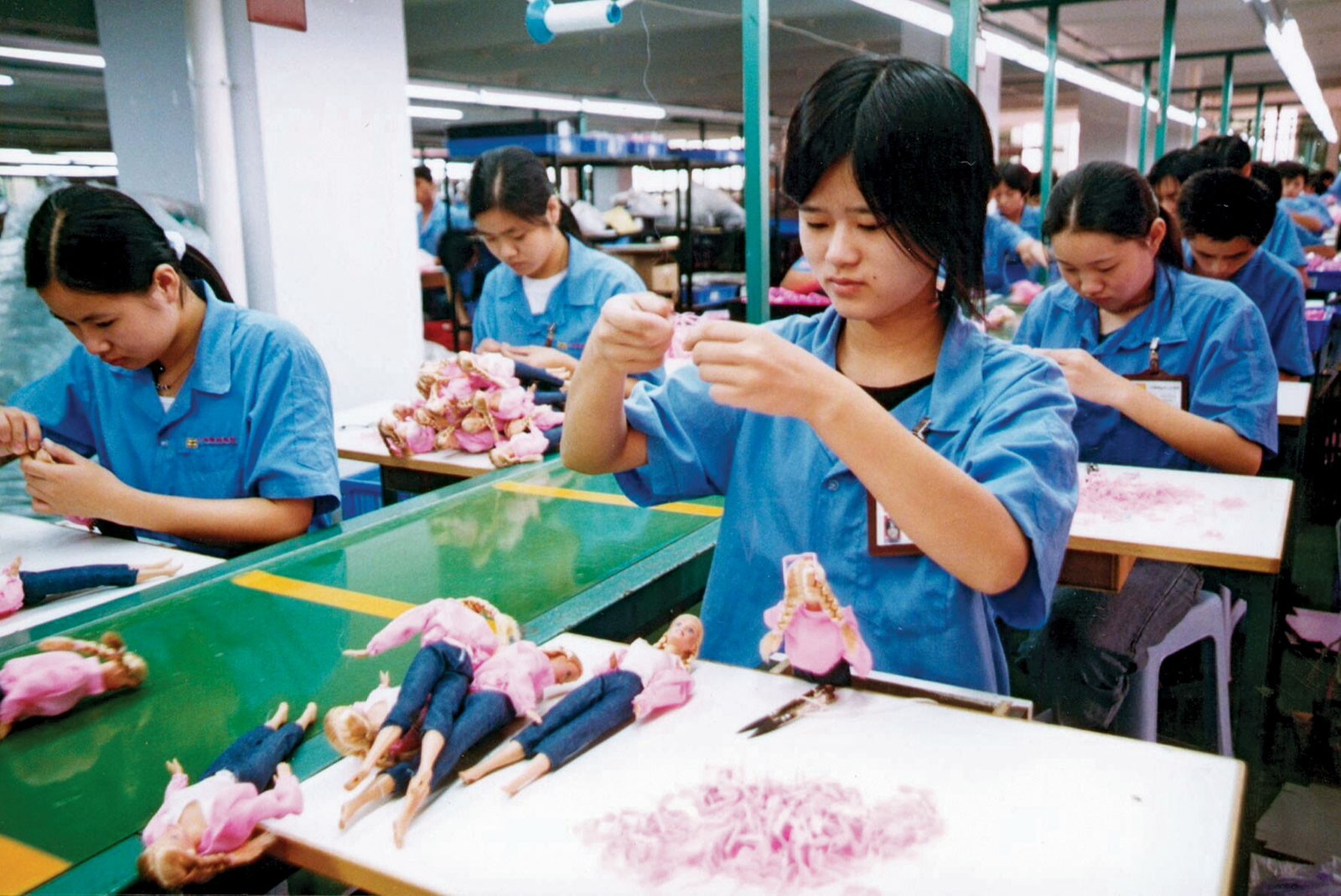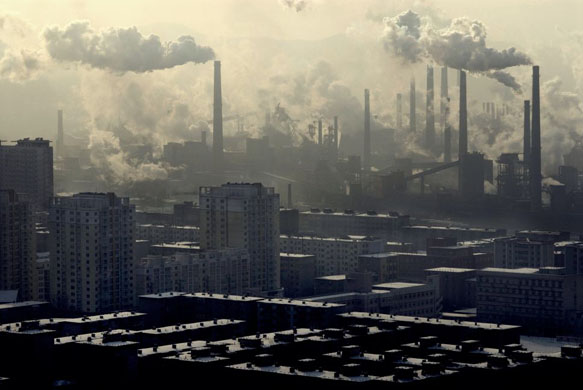 |
In April this year, the collapse of the Rana Plaza garment factory in Bangladesh shocked the world. The day before the disaster, cracks had appeared in columns and walls of the building, and workers evacuated. The next day, workers still felt uneasy about entering the building despite assurances from the owner that it was safe. They were told that they would lose their jobs if they did not enter and begin work. Eventually, the police arrived with batons and forced workers to go to work in the building. More than 1100 people died that day. Of the survivors, more than 100 required amputation of limbs; many more received other life-long debilitating disabilities.
In the wake of the Rana Plaza disaster it is not surprising that many have renewed their calls for shoppers to buy from sources where there is some substantive and demonstrable commitment to worker rights. Indeed, in Manna Matters we have consistently argued that one of the most urgent challenges for Western Christians is to find ways to become more responsible for the impact of our consumption.
However, there is a significant objection that needs to be raised at this point. It is not just an objection of those who want to defend the status quo – it is also an objection of many who are concerned about poverty and justice. The objection goes something like this:
‘If we all start switching our consumption to ethical sources, what will happen to all the labourers in China and around the world who work in factories supplying cheap stuff to the world? Sure, they are earning low wages, but isn’t it better to have a low wage than no wage? Although choosing ethical products might be nice for my conscience, isn’t it also just taking work away from the poorest who really need it?
Before getting into the substance of this question, it is worth taking a moment to notice some of the implicit elements of this line of reasoning. The underlying suggestion is that our historically unprecedented levels of consumption are actually helping lift others out of poverty. Indeed, this is what many mainstream economists say repeatedly. What a happy coincidence! Boil that down and we have the formula: my ethical responsibility for justice and to care for my neighbour demands I participate fully in the consumer economy and ensure its endless expansion. Who am I in the world? I am a consumer.
(This is exactly what our leaders are telling us: George Bush after the September 11 attacks and Kevin Rudd when the global financial crisis hit both made a particular plea to their citizens: don’t stop shopping!)
Hmmmm. We can begin to see where there might be some theological and ecological objections to this line of argument. It is always important to be clear with ourselves about where self-interest and reasoning intersect. Nevertheless, whether or not this argument represents a convenient rationalisation of avoiding change, there is still the much more important question of whether it is true or not. Let’s examine these objections.
Doesn’t buying the products of low-wage labour mean I am supporting those people who depend on low-wage jobs?
| |
 |
In the most immediate and direct sense, there is some truth to this statement. When you buy something cheap from China – the world’s manufacturing powerhouse – you are endorsing a production system that gave a job to some people – let’s call them Jack and Jill – who may well be thankful of even the low-wage that it offers. However, it cannot be said that you are actually supporting Jack and Jill. What our dollars do is support a production and retail system that is currently employing Jack and Jill. This system is made up of a long and complicated supply chain, with brands and retailers at the top, and underneath them sub-contracting suppliers and sub-sub-contracting factories, who are the actual employers of Jack and Jill. As Nike will tell you, they have never employed people like Jack and Jill – Nike don’t make shoes at all, they just market them.
As the brands and retailers don’t actually own any factories, they can choose to get their products made anywhere in the world, so we should not be particularly surprised or shocked that they will generally contract whoever is quoting the lowest price. Major brands have astronomical marketing costs, so they are keen to keep production costs as low as possible. It has been estimated that in 2001 Nike paid Tiger Woods more money for his endorsements than the entire 160,000 Indonesian workforce who were making Nike shoes that year.
This system, where brands and retailers choose where they source their production based on the lowest cost is referred to as capital mobility, which means that the people with the money can take their money wherever in the globe they prefer. When cost factors in a particular country begin to change too much – for example, if the government introduces a minimum wage, or labour becomes more scarce and workers are able to demand a higher price, or if new environmental regulations are introduced, or if taxation rules change – then companies will begin to source their production somewhere cheaper, and Jack and Jill lose their jobs.
This is precisely what has been happening along the east coast of China for the past few years. Since its extraordinary industrial boom in the 1990s, this is where the vast majority of China’s exporting factories have been located, offering a seemingly endless supply of low-wage labour and attractive investment and taxation conditions. However, in 2008 the Chinese Government, beginning to get worried about the politically destabilising effect of breath-taking social inequality, introduced a new labour law that increased the cost of labour. At the same time, under pressure over the growing list of environmental disasters associated with the manufacturing boom, the Government tightened its environmental regulation of industry. When the global financial crisis hit, bringing a reduced demand for China’s exports, producers decided the cost equation was no longer to their liking. In 2009, 10,000 clothing and footwear factories shut down in Guangdong and relocated elsewhere. That is a lot of Jacks and Jills out of work.
So rather than supporting Jack and Jill in Guangdong, our purchasing of low-wage labour products only ends up supporting the system that is endlessly seeking out the cheapest labour. Where did they go? One of the biggest winners of rising costs in China has been Bangladesh. Since the financial crisis, Australian garment orders in Bangladesh have increased by 1500%, with heavy involvement from many of the big name brands such as Coles, K-Mart, Big W, Target, Rivers and Cotton On. The combination of very low wages, very weak regulation, and a large, skilled-but-poor workforce has made Bangladesh something of a gold rush for clothing retailers. Only months before the Rana Plaza tragedy, retailers and brands had rejected a modest proposal to improve safety because it would have added a few cents to the cost of each item. And although the scale and drama of Rana Plaza made news headlines, for those who follow Bangladeshi labour conditions it was not news at all – not many months before 112 people died in a garment factory fire, and there were 42 other such factory fires in the preceding 18 months.
In a recent Four Corners investigation, one factory owner openly stated that prices being demanded by Coles (for their low-cost fashion brand, ‘Mix’) made it impossible to be compliant to safety regulations (you can watch the documentary on www.abc.net.au/4corners). Another Coles supplier sometimes forced its workers to stay working until 3:30am to fill orders, and if necessary, even locked them in for the whole night. (It was during such a lock-in that the 112 workers perished in a factory fire in November 2012.) Needless to say, working conditions in Bangladesh are appalling, however, in the Maplecroft global labour rights and safety index, Bangladesh (17th worst) is ranked well ahead of China and Pakistan (3rd and 2nd worst respectively).
The response of retailers following the Rana Plaza collapse was telling. The first response was almost universally to distance themselves from the factories and factory owners – they are just the buyers, they can’t be held responsible for conditions on the ground. The second, when it became clear there was an upswell of public anger, was to make noises about withdrawing from Bangladesh. Here we see the effects of capital mobility once again. Rather than pay a higher price to factories that would allow better wages and better conditions, and especially rather than invest directly in factories to have much closer involvement with worker conditions, many retailers prefer simply to wipe their hands and relocate to somewhere that is off the public radar. Where will they go? Some are touting Cambodia as the next big destination.
Who are Jack and Jill anyway?
 |
At this point we need to ask a question that is all too rarely asked: who are these low-wage labourers for whom our extravagant consumption is so graciously providing a job? In China and Bangladesh, low-wage manufacturing booms have been celebrated as the solution to rural poverty. Certainly, the vast majority of low-wage labourers in countries such as China, Bangladesh, Vietnam and Cambodia are rural-urban migrants. They are people who have left village-based agricultural settings to seek work in the city. In China since the 1980s, more than 130 million people have left their rural homes to become urban labourers – the largest peace-time movement of people in human history. They currently represent one-third of the urban workforce and are overwhelmingly concentrated in ‘3-D jobs’ (dangerous, dirty and demeaning). In the cities, rural migrants face systemic discrimination from the law, government services, landlords and the resident population in general. Frequently their mental health and their physical health suffer. In Bangladesh, families with both parents working in garment factories struggle to pay for even slum rents and a meagre subsistence diet. Why choose this?
Low-wage urban labour in the developing world cannot be properly understood without first understanding what has been happening to land and to agriculture. The particulars and circumstances vary across countries, however, there are typically three common threads. Firstly, over the past half century, rural populations have been faced with the steady loss of agricultural land and other natural resources (forests and fisheries) upon which they depend. The factors driving this process vary significantly. In Cambodia, rural people in every province have lost huge amounts land and forest to the crudest forms of land-grabbing by powerful elites. In Bangladesh, loss of land and resources has been more associated with land degradation and climate change impacts, such as flooding, salinisation and drought. In China, land degradation on a colossal scale – soil erosion, desertification and salinisation affecting almost 40% of the country – has undermined the productivity of rural populations since the disastrous policies of Mao Tse Tung. More recently, it has been estimated that about 50 million farmers in China (more than twice Australia’s population!) have been displaced by land-grabbing for urban and industrial development as part of the economic boom.
Even lack of access to clean water, which we tend to imagine as an endemic condition of rural poverty, is a problem of largely modern character. It is estimated that perhaps as much as half of the world’s freshwater habitats were lost during the 20th century, primarily as a result of water extraction, drainage and in-filling, and erosion from vegetation clearing. Combined with population growth and pollutants (effluent, plastics and chemicals) the disappearance of freshwater not only makes water more scarce, but tends to seriously undermine the quality of remaining freshwater sources.
Closely tied with the process of loss of land and resources has been the widespread ecological decline, and therefore declining ecological productivity, of land and resources. Most rural communities in the developing world have, to varying degrees, derived a portion of their livelihood – both food and materials – outside of the monetary economy, from the commons of forests, rivers, grasslands and wetlands. This is a double whammy – not only are there less land and resources available, those that are available are less and less productive. Add to this rapid population growth, and you can begin to see that in very many places the viability of rural communities has been seriously undermined.
Finally, the rural sector virtually everywhere has been trapped in declining terms of trade with the city. This means that the primary produce of the country has been consistently economically undervalued compared to the goods and services of the city. This is one of the economic characteristics of the industrial era, and indeed it is a necessary ingredient of the current consumer system. This structure was virtually enshrined in the global economy through the international trade agreements developed by Western countries following the Second World War (through the General Agreement of Tariffs and Trade and now the World Trade Organisation). Farmers are trapped in a system of low prices and high risk and they can see with their own eyes that cities are where profits are made.
Put simply, agriculture the world over is under immense strain, and therefore rural communities the world over are under immense strain. Now add to this the increased exposure of rural communities, through TV and transport mobility, to the amazing wealth of the cities, and it is not hard to see why cities are exerting an incredibly strong gravitational pull for the rural poor, and especially the young.
When we take in the big picture, we can see that it is the same consumer system that is making the life of rural communities untenable all over the world that is also offering the supposed ‘solution’ of low-wage labour. Of course, those caught in such a crunch take whatever job they can get and are thankful even for a subsistence wage under exploitative conditions. But should we applaud the fact that they are placed in such a position?
---
To sum up then, buying the products of low-wage labour cannot be said to support the actual people (Jack and Jill) who work in the factories; it merely supports the system that continually seeks out the lowest paid labour, regularly discarding workers in one region when cheaper workers in another region become available. Furthermore, we can’t fully appreciate why so many are so willing to engage in low-paid dirty, dangerous and demeaning labour until we understand what is happening to agriculture and the ecological systems in which agricultural communities reside. Cheap consumer goods, whether they be food, technology, household items or plastic goods, are a double whammy of exploitation – they are only made possible by highly destructive forms of mining the earth’s resources (whether it be soils, rivers, forests, oceans or minerals), which in turn drives the poor who have depended upon these resources into the cities of the world to become the factory fodder of the global middle class.
What should we do? If you are looking for some neat solution that explains how the world can move seamlessly from this system to a more just and sustainable system and tells you how to act in the meantime without troubling your conscience, then you need to seek some alternate reality because such a thing is not possible here. But even if we cannot yet see how to solve the whole riddle, we have a desperate need to begin to make choices that point to a better way. As Dorothy Day once wrote, ‘Our problems stem from our acceptance of this filthy, rotten system’. Our actions need to signal our non-acceptance of this filthy, rotten system. While neither complete or fool-proof, the ideas behind ethical consumption offer guidance and instruction (or Torah, see accompanying articles in this edition) for how we can begin to say ‘no’ to one system and ‘yes’ to another. As the Ethical Consumer Group says, ‘Your dollar is your vote’.

